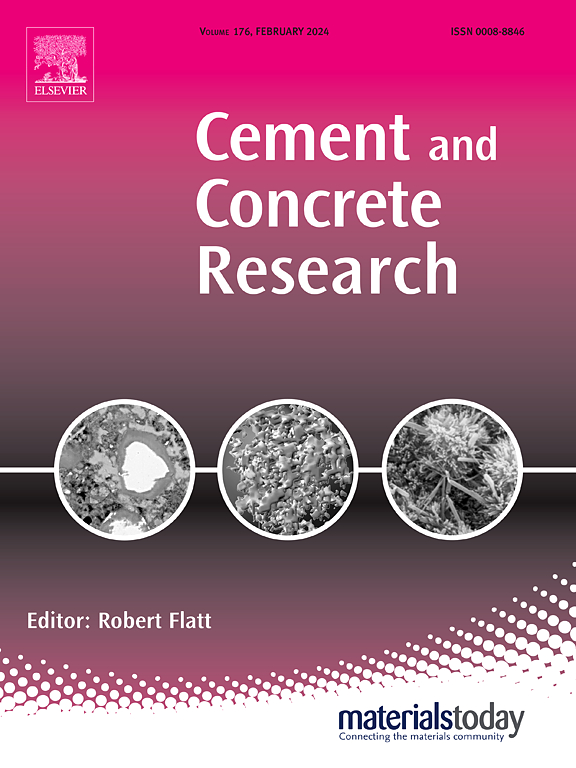Molecular insights into sulfate-induced chloride release from Friedel's salt
IF 13.1
1区 工程技术
Q1 CONSTRUCTION & BUILDING TECHNOLOGY
引用次数: 0
Abstract
Sulfate attack can impair the chloride-binding capacity of Friedel's salt (FS) in cementitious materials by inducing the release of its bound chloride ions (Cl−). However, the atomic-level understanding of this reaction remains unclear. In this study, ab initio molecular dynamics (AIMD) is employed to elucidate the molecular-scale exchange kinetics of SO₄2−/Cl− at the FS/sulfate solution interface. The results demonstrate that SO₄2− weakens both the electrostatic binding of Cl− to the [Ca₂Al(OH)₆]+ layer and its hydrogen bonding with water in the [Cl·2H₂O]− layer through charge redistribution effect, thereby facilitating Cl− release and subsequent SO₄2− substitution. Furthermore, the dynamic reconstruction of hydrogen bond (H-bond) network within the FS anion-binding layer is a critical mechanism for interfacial restabilization after anion exchange. First-principles calculations confirm the significant thermodynamic spontaneity of the SO₄2−/Cl− exchange, highlighting both the ionic competitive advantage and binding stability of SO₄2−.
弗里德尔盐中硫酸盐诱导的氯化物释放的分子洞察
硫酸盐的侵蚀可以通过诱导其结合的氯离子(Cl−)的释放而损害粘结材料中弗里德尔盐(FS)的氯结合能力。然而,对这种反应的原子水平的理解仍然不清楚。本研究采用从头算分子动力学(AIMD)研究了硫酸铵/硫酸盐溶液界面上硫酸铵2−/Cl−的分子尺度交换动力学。结果表明:SO₄2−通过电荷重分配效应减弱了Cl−与[Ca₂Al(OH)₆]+层的静电结合,减弱了[Cl·2H₂O]−层中Cl−与水的氢键,有利于Cl−的释放和随后的SO₄2−取代。此外,FS阴离子结合层内氢键网络的动态重建是阴离子交换后界面再稳定的关键机制。第一性原理计算证实了SO₄2−/Cl−交换的显著热力学自发性,突出了SO₄2−的离子竞争优势和结合稳定性。
本文章由计算机程序翻译,如有差异,请以英文原文为准。
求助全文
约1分钟内获得全文
求助全文
来源期刊

Cement and Concrete Research
工程技术-材料科学:综合
CiteScore
20.90
自引率
12.30%
发文量
318
审稿时长
53 days
期刊介绍:
Cement and Concrete Research is dedicated to publishing top-notch research on the materials science and engineering of cement, cement composites, mortars, concrete, and related materials incorporating cement or other mineral binders. The journal prioritizes reporting significant findings in research on the properties and performance of cementitious materials. It also covers novel experimental techniques, the latest analytical and modeling methods, examination and diagnosis of actual cement and concrete structures, and the exploration of potential improvements in materials.
 求助内容:
求助内容: 应助结果提醒方式:
应助结果提醒方式:


